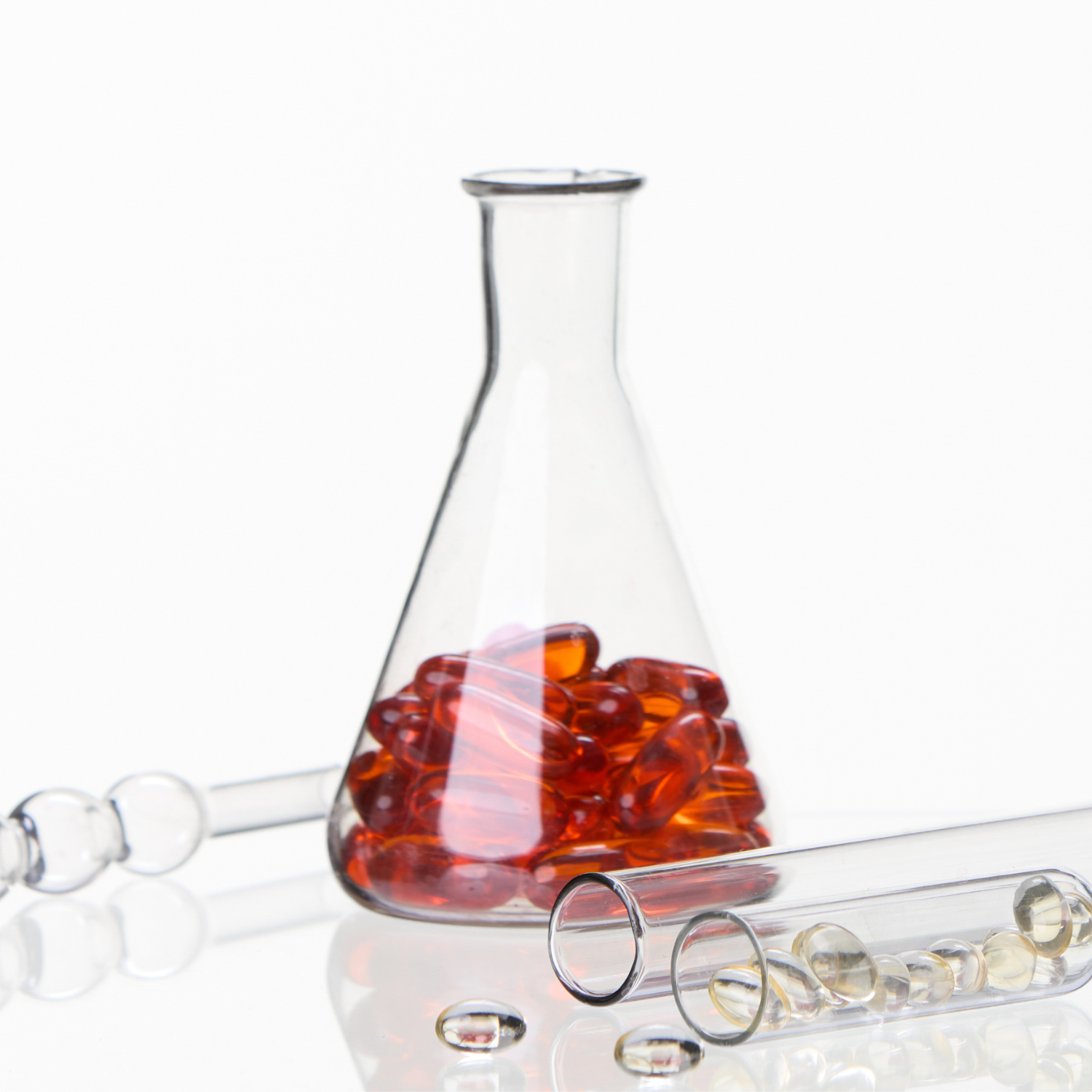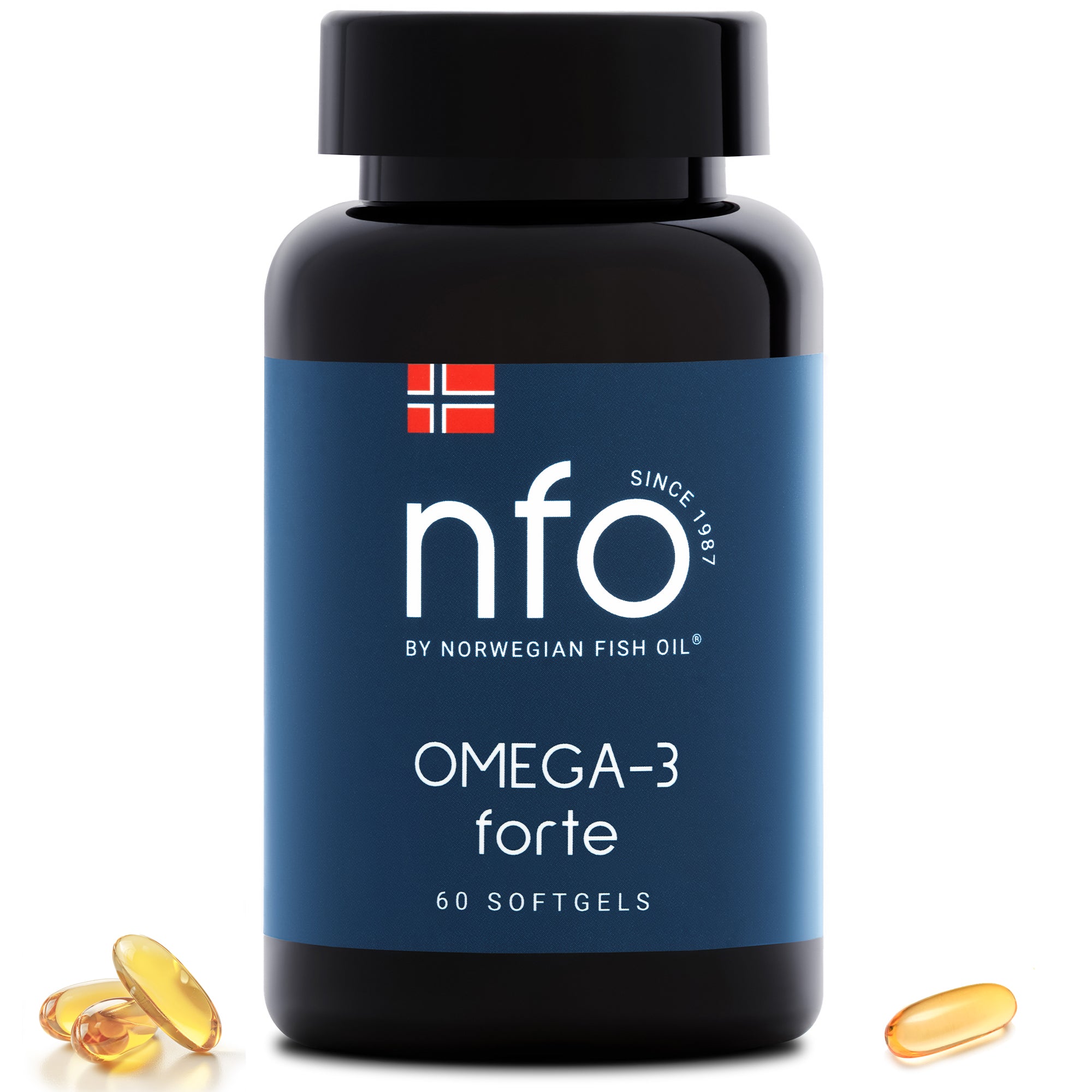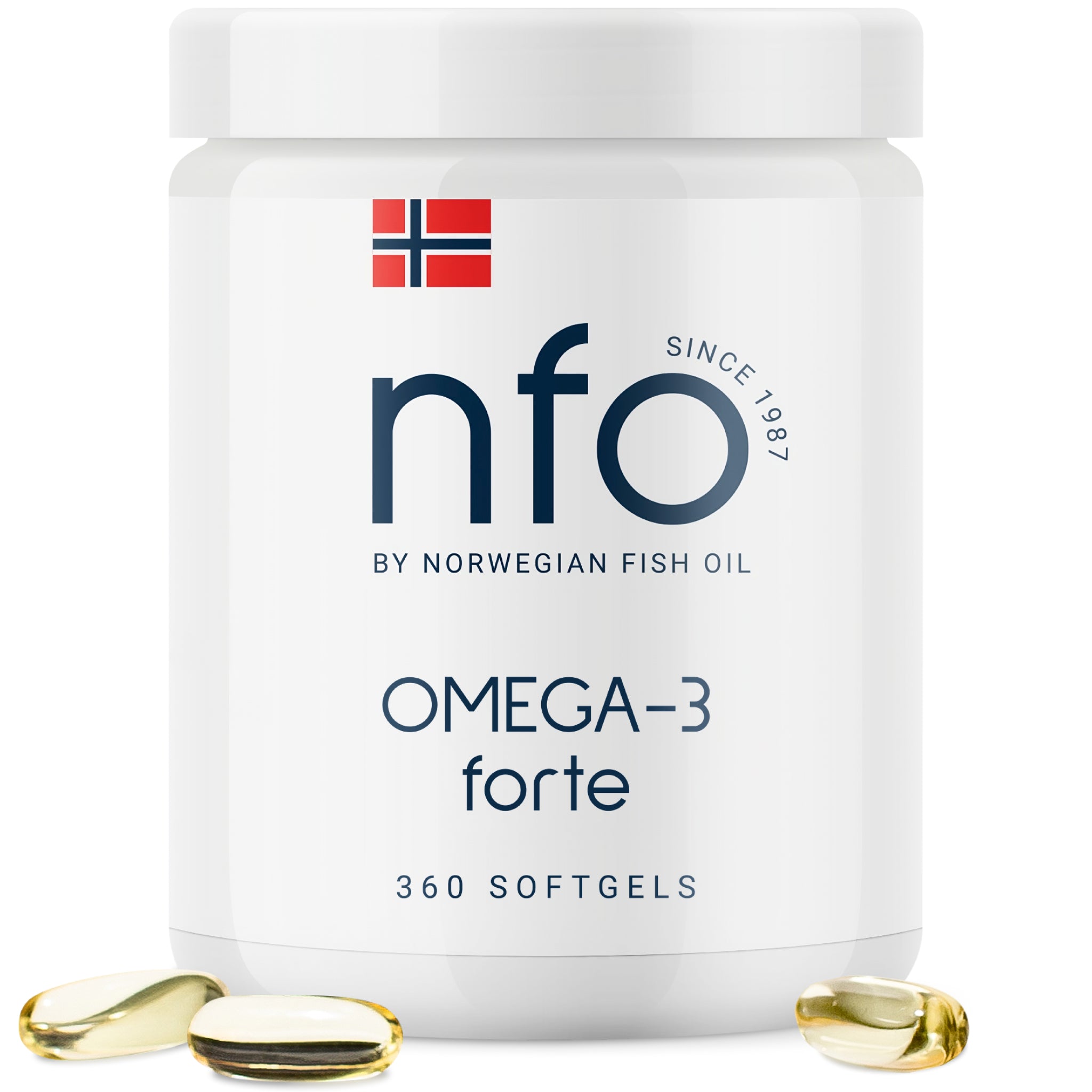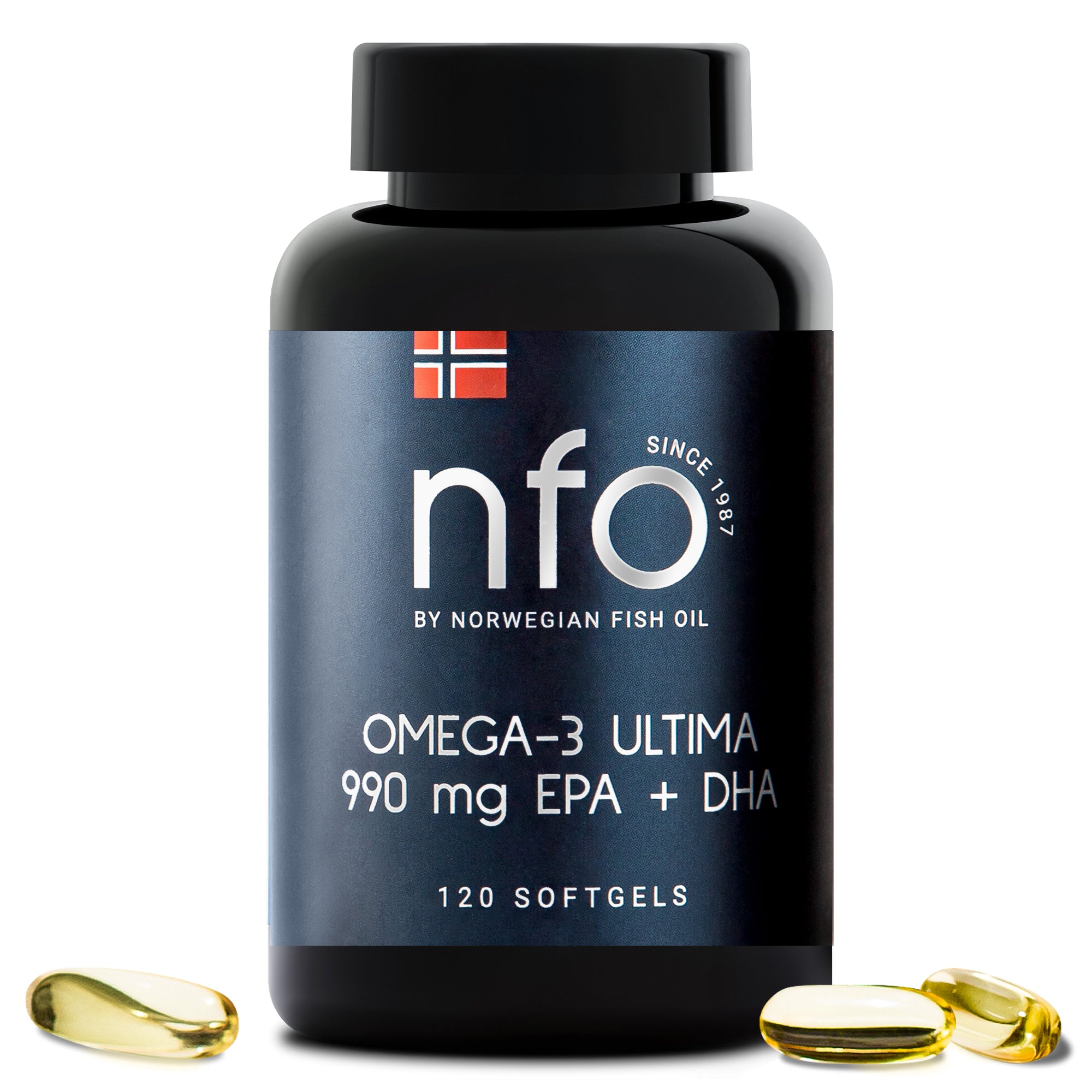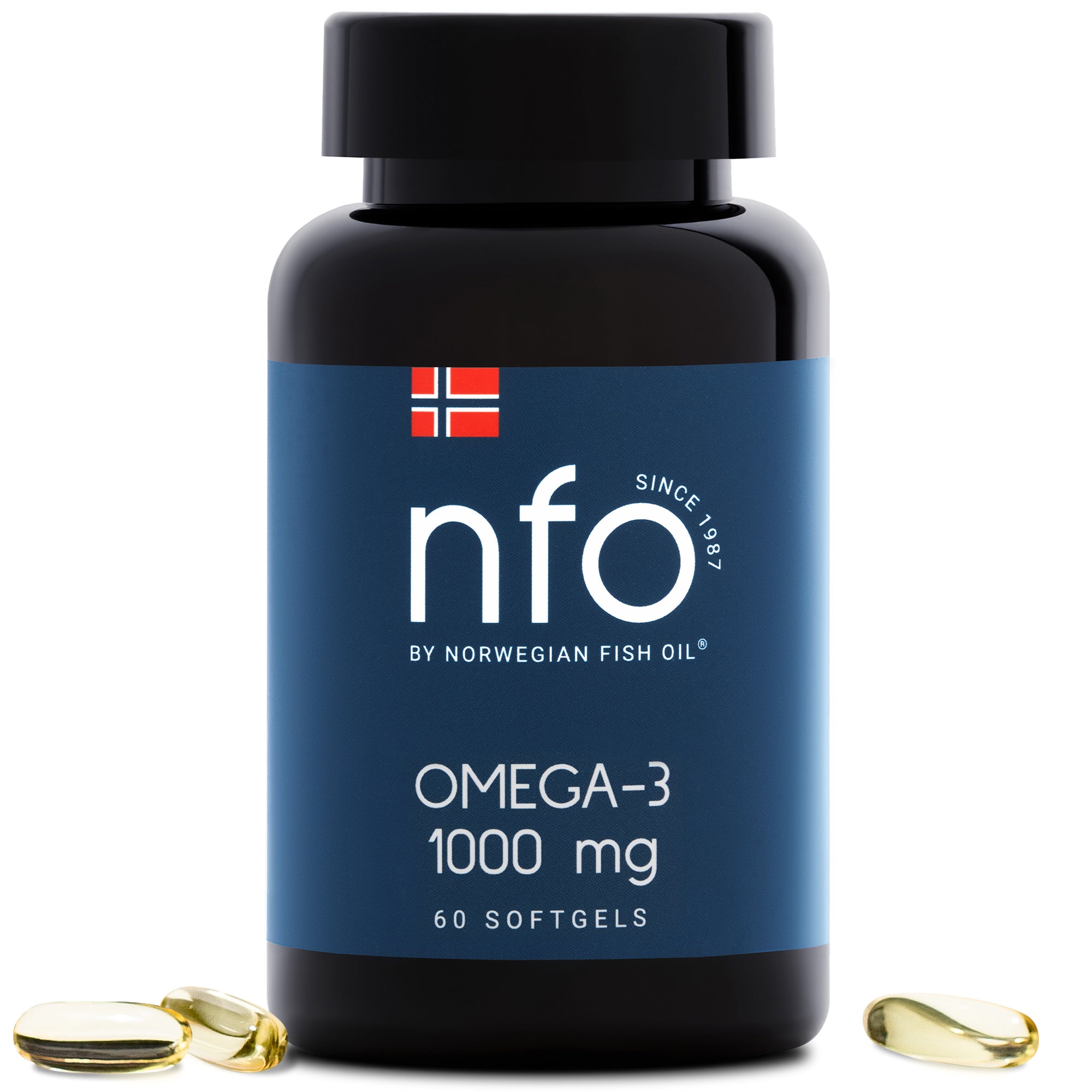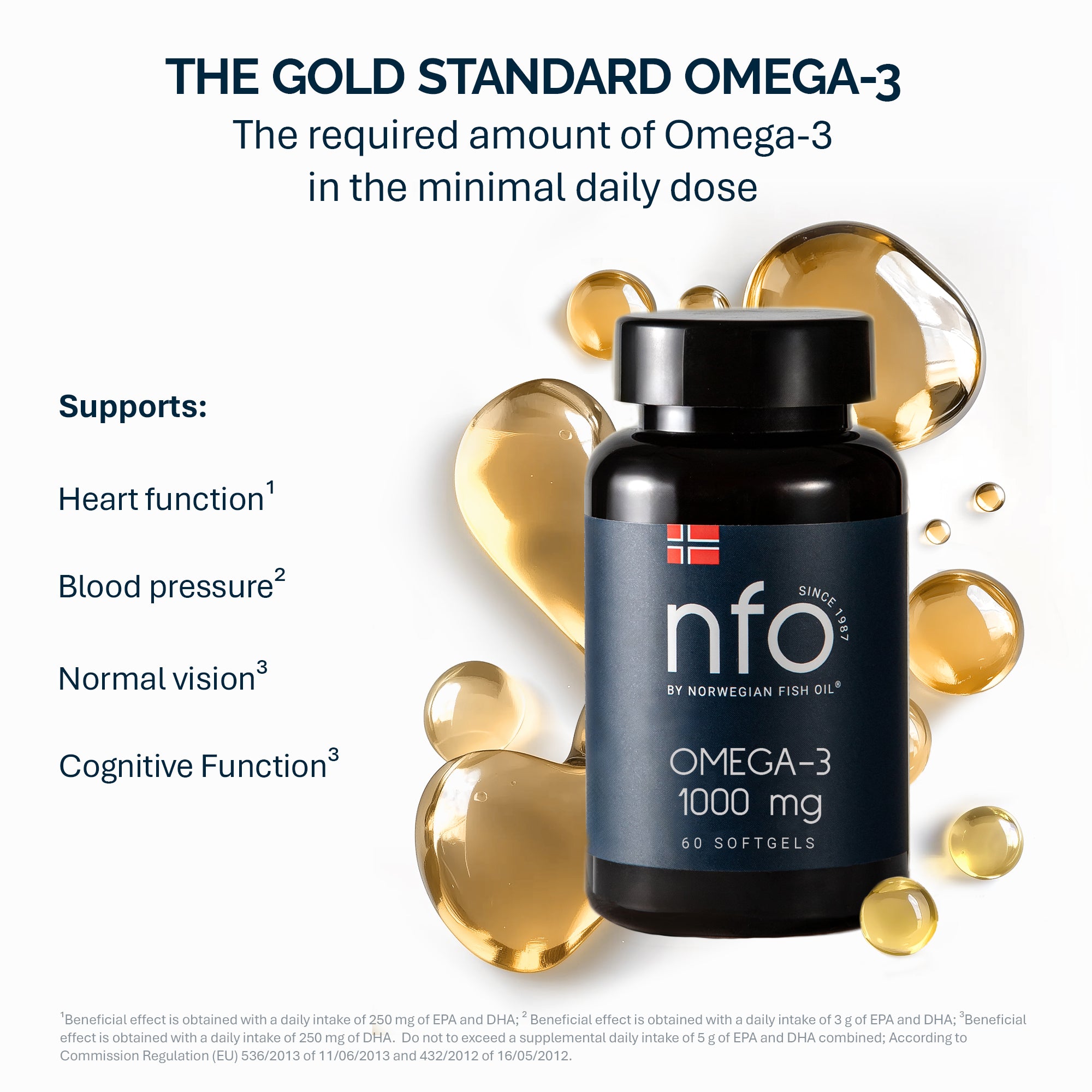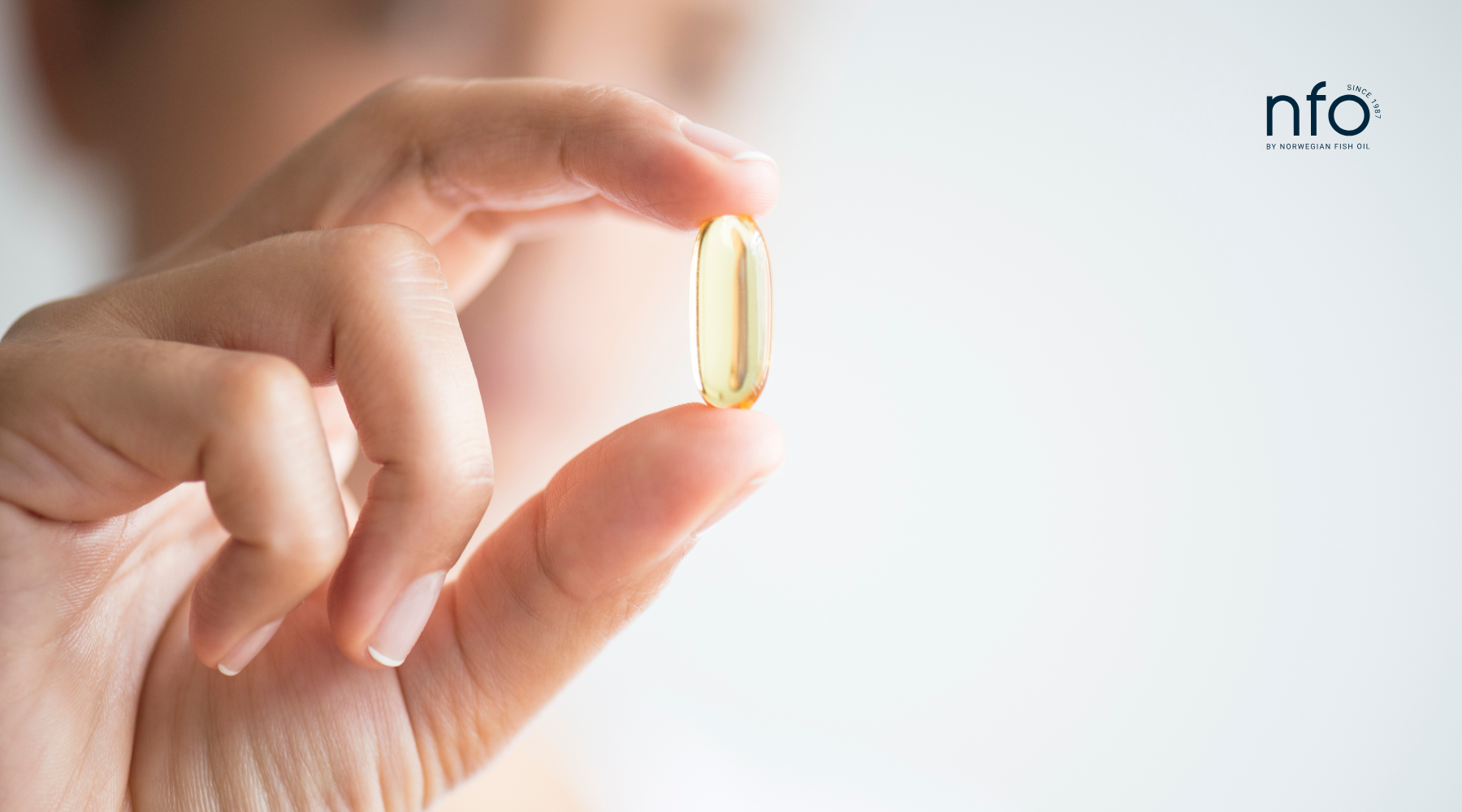How to get the most out of fish oil
Fish oil is one of the most popular supplements among health enthusiasts, and for good reason – it’s rich in omega-3 fatty acids like EPA and DHA that support your heart, brain, and overall well-being. But getting the most out of fish oil isn’t just about popping any old capsule. It comes down to the quality of the oil, how it’s processed, and whether it meets top safety standards. In this guide, we’ll dive into the science of omega-3s in a friendly way, exploring why the quality of crude fish oil matters, how low oxidation and purity boost health benefits, what high-standard manufacturing looks like, and how global standards (like those set by EFSA in Europe) ensure you’re getting a safe, effective product. We’ll also highlight a next-generation fish oil bundle from Norwegian Fish Oil (NFO) – a brand that’s pushing innovation and quality to new heights – including their Omega-3 Ultima, Omega-3 Strong DHA, and Omega-3 Kids Chewable products. By the end, you’ll know exactly how to maximize the benefits of fish oil for your health.
Why quality of crude fish oil matters for Omega-3 benefits
Not all fish oil is created equal. The journey to a great supplement starts with the crude fish oil – the raw oil extracted from fish. If this base oil isn’t high quality, even the best processing won’t fully salvage it. So, what defines quality in crude fish oil? It largely comes down to freshness, purity, and origin.
Freshness and Oxidation
Fish oil is highly prone to oxidation (it can go rancid easily) because omega-3 fatty acids are delicate. Think of how fish left out too long develops a bad smell – that “fishy” odor is a sign of oxidation. Similarly, fish oil that’s not fresh or is poorly handled can oxidize, forming rancid compounds that not only taste and smell bad but also diminish the oil’s health benefits. Fresh, high-quality crude oil will have low oxidation from the start.
For example, the best producers minimize the time from catch to processing. Norwegian fisheries often process fish right after harvest, which dramatically reduces oxidation and keeps the oil fresh and potent. This matters because oxidized oil could be less effective and might even be pro-inflammatory (essentially the opposite of what you want from an anti-inflammatory omega-3 supplement).
Purity of source (heavy metals and toxins)
Fish can accumulate contaminants from their environment. If the crude fish oil comes from fish in polluted waters, it may contain heavy metals like mercury, lead, or organic toxins like PCBs. High-quality crude oil typically comes from clean, cold waters (such as off the coast of Norway) with low pollution levels. Cold-water fish like sardines, anchovies, and mackerel from pristine environments start out with fewer contaminants. That means the crude oil extracted is naturally purer and requires less intensive cleaning. Quality matters from the start – it’s easier to end up with ultra-pure fish oil when you begin with cleaner raw oil.
Proper handling and storage
Even good crude fish oil can degrade if it’s not handled right. Quality-focused manufacturers transport and store crude oil in conditions that prevent spoilage – typically in the cold, dark, and away from oxygen. This prevents oxidation before the refining even begins. The European Food Safety Authority (EFSA) has noted that bulk fish oil for human consumption should be stored cold, in darkness, and without oxygen to stave off rancidity. So, a top-notch fish oil brand will pay attention to these details from the very first steps.
Low oxidation levels: keeping fish oil fresh and powerful
One of the key quality markers for fish oil is how oxidized it is. Oxidation is a chemical reaction that happens when the oil reacts with oxygen (and is accelerated by light, heat, and metals). Highly oxidized (rancid) fish oil not only smells and tastes unpleasant, but it also loses potency and could even have negative health effects. Here’s why low oxidation is critical and how it’s measured:
Why oxidation matters
Omega-3 fatty acids (EPA/DHA) are polyunsaturated fats, which means they have multiple double bonds and are quite fragile. When they oxidize, they break down into substances that can cause inflammation or stress in the body instead of reducing it. Consuming rancid oil might negate the positive effects of omega-3 or even contribute to health issues over time. Maintaining low oxidation ensures you actually get the anti-inflammatory and heart/brain benefits you’re after.
TOTOX – measuring freshness
The industry measures oxidation with parameters like peroxide value (primary oxidation) and anisidine value (secondary oxidation products). These are often combined into a single TOTOX value (Total Oxidation). Simply put, the lower the TOTOX, the fresher the oil.
As a rule of thumb, a quality fish oil should have a TOTOX well below the upper safe limit of 26 (a guideline from the Global Organization for EPA and DHA, also adopted in EU standards).
Many cheap or poorly made fish oils exceed this – shockingly, one study of 171 fish oil supplements found that about 50% had oxidation levels above the recommended limits, meaning a lot of products on shelves were at least somewhat rancid.
By contrast, premium brands pride themselves on ultra-low TOTOX values. For instance, NFO reports TOTOX values consistently in the range of 6 to 15, far below the limit and indicating exceptional freshness.
How to keep oxidation low
It starts with fresh raw oil (as discussed) and continues with gentle, oxygen-free processing. Top manufacturers handle fish oil in oxygen-free environments and often add natural antioxidants like vitamin E to protect the oil during encapsulation and storage. Keeping capsules in dark or opaque bottles and storing them in cool conditions also preserves freshness. Check if a brand publishes its TOTOX or peroxide values; transparency is a good sign. Low oxidation not only makes the oil effective but also prevents the “fish burps” or nasty aftertaste since those are often caused by oxidized oils.
Low oxidation = high quality. To get the most out of fish oil, choose a supplement that is fresh and stable. The difference can be like that between fresh fish and old fish – one nourishes you, the other might make you sick.
Purity and safety: heavy metal-free and pathogen-free oil
Another pillar of getting maximum benefit from fish oil is making sure it’s pure and safe. This means no heavy metals, no pollutants, and no harmful microbes in your bottle. High-quality fish oil undergoes rigorous purification and testing so that all you get is the good stuff (omega-3s) without the bad. Here’s what to consider.
Heavy metals and toxins
Large predator fish like tuna or swordfish are known to have mercury, but the fish used for most fish oil supplements (like anchovies, sardines, mackerel) are smaller and tend to have lower levels. Still, any fish can have traces of mercury, lead, arsenic, or industrial chemicals (PCBs, dioxins) from ocean pollution.
The best fish oil brands thoroughly purify the oil to remove these contaminants. A common method is molecular distillation, which is a special low-pressure, low-heat distillation that can separate out heavy metals and other impurities without damaging the omega-3s. NFO, for example, employs molecular distillation to ensure their oils are clean. The result is that quality fish oils often have mercury levels so low they are undetectable – one analysis of several over-the-counter fish oils found mercury was below detection in many products, or at most only a few micrograms per liter (which is negligible). In fact, every batch of a reputable omega-3 supplement is typically tested for heavy metals to make sure they’re far below the legal limits (and good companies will have certificates of analysis to prove it). This means you can reap the cardiovascular and cognitive benefits of omega-3s without worrying about accumulating toxins.
No foodborne pathogens
Because fish oil is an animal product, one might worry about bacteria or other pathogens. However, the refining process for fish oil effectively eliminates microbial risks. The oil is usually heated and processed multiple times, which would kill bacteria, and the final product has no water content, so microbes can’t grow in it. EFSA’s Panel on Biological Hazards looked at fish oil production and concluded that the risk of bacterial contamination in properly refined fish oil is negligible.
Of course, manufacturers must still follow good hygiene practices. You’ll often see that supplements are produced in facilities with GMP (Good Manufacturing Practice) certification, which ensures cleanliness and safety. Also, since fish oil capsules are sealed, there is little chance of contamination unless the capsule is broken. So as long as you choose a reputable brand, you shouldn’t have to worry about things like Salmonella or other nasties in your fish oil. It’s one less thing to fret over while taking your daily omega-3.
Oxidation by-products kept low
We talked about oxidation above, but it’s worth noting here as a safety factor too. Rancid oil can contain compounds (like peroxides and aldehydes) that you don’t want to consume in large amounts. By keeping oxidation levels low, quality fish oils avoid these potentially harmful by-products. It’s part of purity as well – pure fish oil isn’t just free of metals and germs, it’s also free of excessive breakdown products.
In essence, purity = safety + efficacy.
A fish oil supplement with no heavy metals and no pathogens means all you’re ingesting is the beneficial omega-3 fatty acids (and maybe a little antioxidant like vitamin E). This purity is critical for maximizing benefits because contaminants can interfere with health, and in worst cases, a contaminated supplement could do more harm than good. Always look for brands that stress third-party testing, certifications, or pharmacopeia standards for fish oil purity. Now, how do top manufacturers achieve such purity? Let’s take a peek into the production process.
High-standard manufacturing: from ocean to capsule
Producing high-quality fish oil is a complex science. It’s not just squeezing oil out of fish; it’s about preserving delicate nutrients while removing unwanted substances. High-standard manufacturing is the bridge between a fresh catch and the softgel in your hand. Here’s what the best practices look like:
- Fast and clean processing: as mentioned, time is of the essence. Right after fish are caught, the clock is ticking to prevent spoilage. Quality-focused companies quickly cook and press the fish to extract crude oil, then immediately start the purification process. Often this is done near the fishing areas (e.g., in Norway or Peru) to avoid long transport of raw fish. The crude oil is typically neutralized (to remove free fatty acids), filtered, and molecularly distilled. This distillation happens in a vacuum and at controlled temperatures to pull out contaminants like heavy metals, PCBs, or any environmental toxins. What’s left is a highly purified oil.
-
Maintaining the Omega-3 integrity: another step is concentration. Some fish oils are concentrated to have higher EPA/DHA per capsule. This is where the oil might be converted to an ethyl ester form to purify and increase omega-3 content, and then sometimes converted back to triglyceride form.
Why does this matter? The form of the oil (triglyceride vs ethyl ester) can affect absorption.The natural triglyceride form is how omega-3s exist in fish, and is known for better bioavailability (your body absorbs it easily).
Ethyl esters allow higher concentration but can be slightly less absorbed unless taken with a fatty meal. Some premium products, like NFO’s Omega-3 Ultima, manage to deliver very high omega-3 content while keeping it in the reconstituted triglyceride form for high absorption. This kind of manufacturing finesse – concentrating the oil but also making it easy for the body to use – is part of getting the most out of the supplement. - Oxygen-free environment: during processing and encapsulation, leading manufacturers take care to minimize oxygen exposure. For example, the mixing and filling of capsules might be done under nitrogen gas. NFO’s process notes an oxygen-free environment to protect against oxidation. Antioxidants like vitamin E (tocopherol) are often added to further guard the oil from oxidizing inside the capsule. This ensures that by the time the product reaches you, it’s as fresh as when it was made.
- Encapsulation and softgel quality: the oil is then encapsulated, often in gelatin softgels. The type of capsule can matter – fish gelatin capsules (instead of bovine gelatin) are a nice touch for those avoiding beef, and they also tend to reduce any potential aftertaste. The capsules need to be airtight and strong enough not to leak, but also not so thick that they’re hard to swallow. For specialized products (like chewable for kids), the capsule is formulated to be chew-friendly without a gush of fishy taste. All of this is part of manufacturing design.
- Quality control and testing: a high-standard facility will test the oil at multiple stages. They’ll check that EPA/DHA content is as advertised, confirm no heavy metal contamination (often far below regulatory limits), verify oxidation levels (peroxide value, anisidine value), and ensure no microbial growth. They might also test for things like proper capsule dissolution (to make sure it will dissolve in your digestive tract). Only after passing these tests is the batch released for packaging. Reputable companies may even send their products to independent labs (third-party testing) or have certifications from organizations like IFOS (International Fish Oil Standards) or GOED. These certifications can give consumers extra peace of mind that the product meets certain benchmarks for potency and purity.
Meeting International Quality Standards and EFSA health claims
When choosing a fish oil, it’s reassuring to know that the product aligns with international quality standards and that any health benefit claims are backed by scientific consensus. Regulatory bodies and industry groups around the world have set guidelines to ensure fish oils are safe and effective. Here’s how those play out and what EFSA (European Food Safety Authority) has to do with it.
Global quality benchmarks: organizations like the GOED (Global Organization for EPA and DHA Omega-3s) publish voluntary standards for fish oil quality – for instance, the oxidation limits (TOTOX < 26) we discussed and strict limits on environmental contaminants. Many reputable companies adhere to or even exceed these standards. Additionally, pharmacopeias (like the European Pharmacopeia or U.S. Pharmacopeia) have monographs for fish oil that set quality requirements for any product sold pharmaceutically. When a brand says they meet “international standards,” it often means they comply with these kinds of guidelines for purity, potency, and stability. For example, keeping peroxide value under 5 meq/kg, ensuring less than a certain tiny amount of heavy metals (often in parts per billion), etc., which are all internationally recognized targets. NFO’s products carry presale certificates to show they comply with EU safety and quality rules, which helps build trust that what’s on the label is true and the product is safe.
EFSA-approved health claims:
In Europe, supplement companies can’t just claim anything they want – they can only use approved health claims that EFSA has vetted for truthfulness.
EFSA has evaluated omega-3 (EPA/DHA) extensively, and there are authorized claims such as:
- DHA contributes to maintenance of normal vision, with a daily intake of 250 mg DHA .
- DHA contributes to normal brain function (for adults, 250 mg DHA+EPA per day) .
- EPA and DHA together contribute to normal heart function (250 mg per day of combined EPA+DHA needed) .
- DHA maternal intake contributes to normal brain and eye development of the fetus and breastfed infants (200 mg DHA in addition to normal adult intake) – relevant for pregnancy.
These claims are well-established. A quality product will be formulated to deliver these proven benefits.
For instance, providing at least 250 mg of EPA+DHA daily so you can legitimately say it supports heart health.
NFO ensures that their product labels and descriptions stick to such verified health claims, which means they’re not overstating what the science supports. As a consumer, this is a big plus – you can trust that the promised benefits (like helping maintain healthy cholesterol or supporting vision) are not just marketing fluff, but are grounded in scientific evidence as evaluated by authorities.
Doses and efficacy: international guidelines (including EFSA and also, for example, the American Heart Association) often recommend certain dosages for omega-3s. Generally, ~250–500 mg of combined EPA and DHA per day is recommended for general health (heart, brain, etc.), which is easily met by a good fish oil supplement (for example, one capsule of NFO Omega-3 Ultima has 990 mg EPA+DHA – way above the minimum and can be claimed a therapeutic dose). EFSA also assessed safety and concluded that up to 5 g/day of these omega-3s is safe for adults (meaning high doses are not dangerous, though more is not necessarily needed for everyone). So a product that provides, say, 1–3 g of omega-3s daily is both safe and within a range that studies find beneficial for certain outcomes (like triglyceride lowering at higher doses, etc.). It’s good to check that a brand’s dosage aligns with these researched amounts – too little means you might not get benefits, too much isn’t harmful per se but could be overkill for your needs.
Consumer transparency: another aspect of meeting standards is how transparent the company is about it. Do they publish test results? Do they have certifications like “IFOS 5-star” (a rating indicating the product passed all categories with top marks)? Do they list the exact EPA and DHA content and source of their fish oil? NFO, for example, emphasizes transparency by providing details on their sourcing (Norwegian cold-water fish), their purification process, and how their claims are backed by the EU register. This kind of openness is a hallmark of a company that takes quality seriously.
By adhering to international standards and authorized health claims, a fish oil brand shows that it’s not just hyping its product – it’s delivering real, evidence-based benefits. This is crucial for consumers who want to make sure their investment in a supplement is worthwhile. Now that we’ve covered quality, purity, manufacturing, and standards, let’s look at a real-world example of these principles in action: the NFO (Norwegian Fish Oil) signature product bundle, which we can consider the next generation of fish oil innovation (sometimes dubbed NFO 2.0).
NFO 2.0: next-generation fish oil innovation focused on you
NFO (Norwegian Fish Oil) is a company that has been at the forefront of fish oil quality and innovation. With decades of experience from Norway’s fish oil industry, they’ve developed a line of products that exemplify the principles we’ve discussed – top quality crude oil, low oxidation, high purity, advanced processing, and evidence-based benefits.
Their signature product bundle – which we might call NFO 2.0 – is designed to meet different customer needs with scientific precision. It includes NFO Omega-3 Ultima (high EPA), NFO Omega-3 Strong DHA, and NFO Omega-3 Kids Chewable. Let’s explore what makes each of these special and how they help you get the most out of fish oil:
NFO Omega-3 Ultima – high-potency EPA & DHA in one capsule
NFO Omega-3 Ultima (120 capsules) is the flagship product, and it’s all about delivering a powerful therapeutic dose of omega-3 in the most efficient form. Each softgel packs an impressive 990 mg of EPA + DHA per capsule – which is among the highest concentrations you’ll find on the market in a single capsule. To break that down, per capsule you get about 600 mg EPA and 390 mg DHA. This high potency means you can reach recommended omega-3 intake levels with fewer pills (convenient and cost-effective in the long run).
What are the unique advantages of Omega-3 Ultima?
High EPA for inflammation & heart: EPA (eicosapentaenoic acid) at 600 mg/capsule is great for cardiovascular support – it helps reduce triglycerides and has anti-inflammatory effects. If you’re an athlete or someone looking to support recovery and heart health, this high EPA content is a big plus. Many studies showing heart benefits use doses around 1g/day of EPA+DHA; one capsule of Ultima already gets you close to that. For more intensive support (like if advised by a healthcare provider to lower triglycerides), two capsules give ~1980 mg EPA+DHA, which is substantial.
Balanced DHA for brain & eyes: DHA (docosahexaenoic acid) at 390 mg per capsule supports brain function, cognitive health, and vision. Our brains are packed with DHA, and getting enough is crucial, especially for young adults concerned with learning and memory, or older adults for maintaining cognitive function. DHA also supports eye health (the retina loves DHA). Ultima gives a strong dose of DHA alongside EPA, covering both heart and brain benefits in one go.
Triglyceride form and no fishy aftertaste: NFO Omega-3 Ultima is in the natural triglyceride form (as opposed to ethyl esters), which, as noted earlier, enhances absorption and is gentle on the stomach. Plus, NFO’s purification means it’s odorless and tasteless in the capsule – no more fishy burps. They even mention it’s “no fishy taste” and suitable for people who usually dislike fish oil supplements.
Sports-grade quality: interestingly, NFO markets this as “professional sports perfect”, implying that even athletes who have the highest demands (and are tested for purity, e.g., free of banned substances) can trust it. The high potency helps with muscle recovery and reducing inflammation from intense exercise. It’s essentially a one-stop omega-3 for anyone who wants the absolute best and most potent option.
In essence, Omega-3 Ultima is about maximum benefit with minimal hassle – it leverages all the quality aspects we’ve discussed (fresh Norwegian oil, molecular distillation, low oxidation (TOTOX), high absorption) to ensure you get a mega dose of omega-3s that your body can readily use.
NFO Omega-3 Strong DHA – focused on brain, vision, and prenatal needs
While Ultima is a great all-rounder, NFO Omega-3 Strong DHA (90 capsules) is tailored for those who want extra DHA – for example, students, professionals focusing on brain health, or expecting mothers who want to support fetal development. This formula provides a higher ratio of DHA relative to EPA (around 740 mg DHA and 460 mg EPA in two capsules serving). Here’s why that’s special.
Brain and eye support: DHA is the star for neurological and visual benefits. It’s a major building block of the brain and eyes. By formulating a product with a DHA-dominant mix, NFO is catering to individuals for whom cognitive performance, study, memory, or even mood support is a priority. If you’re a college student or a young adult wanting to stay sharp, ensuring ample DHA can be beneficial. The same goes for pregnant women – DHA is often recommended during pregnancy for the baby’s brain and retina development (EFSA claims 200 mg extra DHA for pregnant/breastfeeding women) . Omega-3 Strong DHA fits that bill perfectly, especially with the convenience of capsules rather than having to take a liquid or multiple pills.
Adequate EPA for balance: even though DHA is higher, you still get 460 mg EPA per serving, which means you’re not missing out on EPA’s cardiovascular and anti-inflammatory roles. It’s a nice balance, leaning toward DHA. Many fish oils on the market actually have more EPA than DHA, so this product is somewhat unique in flipping that ratio to emphasize DHA.
Who it’s for: NFO Strong DHA is great for brain workers – think of it as brain food in a capsule. If you spend long hours studying, coding, or any mentally intensive work, DHA is known to support cognitive function and even mood. Some research suggests omega-3s (especially DHA) can help with concentration and reducing mental fatigue. Additionally, those concerned about long-term brain health (like preventing cognitive decline) often make sure to get plenty of DHA. So this product is really answering those needs. And again, for pregnancy and early motherhood, it’s a convenient way to get DHA without taking separate prenatal DHA supplements.
In short, Omega-3 Strong DHA is NFO’s answer to a targeted cognitive/vision health supplement, delivered with the same high standards of purity and potency. It recognizes that one size doesn’t fit all in omega-3 supplementation – some people might want that extra DHA boost.
NFO Omega-3 KIDS chewables – Omega-3 made easy (and tasty) for children
It’s never too early to benefit from omega-3s! NFO Omega-3 Kids Chewable Softgel is designed especially for children (and even adults who prefer not to swallow pills). Getting kids to take fish oil can be a challenge – the softgels are often large, and the taste/smell can be off-putting. NFO tackles this with small, chewable softgel capsules that have a pleasant Tutti-Frutti flavor to mask any fishy taste. Key points about this product:
Kid-friendly dosage and format: each chewable mini-capsule contains a proportion of EPA and DHA tailored for kids’ daily needs. Four mini-capsules provide about 384 mg EPA and 240 mg DHA in total. That’s a total of 624 mg omega-3, which is a solid dose for children. It’s split into multiple small softgels so that they’re easy to chew and swallow. Children’s omega-3 supplements often aim for roughly 100–500 mg combined EPA/DHA depending on age; NFO’s serving is on the higher end, which can support kids who might not eat much fish. The softgels are also likely quite small and soft, so kids can chew them (the gel capsule is made of bovine gelatin in this case, with flavoring). The taste is presumably fruity, making it more like a treat than a chore.
Added Vitamin D for bone and immune support: a standout feature is that these chewables include Vitamin D (400 IU per 4 capsules). This is great because vitamin D is another nutrient kids need for bone growth and immune function, and it complements omega-3s well. 400 IU is the daily recommended amount for children in many regions, so NFO basically built a kids’ multibenefit: omega-3 for brain/eye development plus vitamin D for bones and immunity. This combination addresses common gaps in kids’ diets (since kids might not get enough vitamin D or omega-3 from food alone, especially if they’re picky eaters or don’t get a lot of sun).
Health benefits for kids: the EPA and DHA in these chewables support brain development, learning, and vision in children – DHA especially is crucial for kids’ growing brains and eyes. Some studies suggest omega-3s can help children with focus and possibly mood. While we have to be careful with claims, it’s generally accepted that DHA contributes to normal visual development in infants up to 12 months (100 mg DHA daily, per EFSA) and overall brain function in children as they grow . These softgels are an easy way to ensure kids are getting those benefits if they won’t eat oily fish like salmon regularly.
Safety and quality for the youngest: NFO applies the same stringent quality here, which is important because you absolutely want anything for kids to be pure and safe. The oil is purified to remove mercury and other contaminants, and oxidation is kept low, so there’s no risk of kids consuming any harmful substances. The inclusion of antioxidants like vitamin E and using high-quality gelatin means even the structure of the capsule is made to high standards. Parents can feel good giving this to their children daily.
The NFO difference: innovation, quality, and customer-centric design
Across these products – Ultima, Strong DHA, and Kids Chewable – a few themes clearly emerge that highlight why NFO is positioned as superior in the fish oil market:
- Innovation in formulas: NFO is creating specialized formulas (high EPA, high DHA, kids version with vitamin D). This next-generation approach (NFO 2.0) means whatever your specific need or life stage, there’s an omega-3 solution optimized for you. Many competitor products are generic, but NFO leverages scientific precision to fine-tune omega-3 supplements.
- Uncompromising quality: from sourcing wild fish in Norway’s clean waters to employing cutting-edge purification (molecular distillation) and ensuring extremely low oxidation values, NFO’s quality control is top-tier. The products consistently test well below allowable limits for oxidation and contaminants, as we discussed (TOTOX 6–15 vs. the limit of 26, heavy metals virtually zero). They also keep the oil in triglyceride form for natural absorption. All these factors contribute to efficacy – the benefits promised (heart, brain, vision support, etc.) are actually delivered because the omega-3s are intact and bioavailable.
- Customer focus and experience: NFO clearly designs products with the end-user in mind. Worried about swallowing big pills? They made mini capsules and chewables. Need a higher dose? They made Ultima super potent so you need just one a day. Can’t stand fishy burps? They ensured no fishy odor or repeat. They also provide guidance like compatibility of supplements (what you can pair with what) and education via their evidence-based articles. This kind of customer-centric approach, without even naming any competitors, naturally sets them apart. It feels like they’ve thought of everything: from athletes to kids to expecting moms, each gets a product that’s just right.
- Trust and transparency: NFO leans on scientific credibility – using EFSA-approved claims, referencing NIH (National Institutes of Health) fact sheets, and maintaining transparency pages about their process. This builds trust. They don’t make wild claims like “this pill will cure X,” but rather stick to what omega-3s are known to do (e.g., “contributes to normal heart function” or “keeps your brain powered up” for DHA as they nicely phrase on their site in simple language for consumers). By not overhyping and backing up with science, they position themselves as a reliable, authoritative brand.
In the competitive world of supplements, these differences are significant. Without explicitly naming any other brands, one can say that NFO sets a high bar. Many fish oil supplements might meet basic requirements, but NFO strives to exceed them on all fronts – potency, purity, format, and scientific backing. This ultimately means you, the consumer, get more value and better results from their products, which is how you get the most out of fish oil.
Scientific references:
1. Albert, B.B., et al. (2015). Fishing for answers: is oxidation of fish oil supplements a problem? Journal of Nutritional Science, 4, e36. (Discusses oxidation levels in fish oil supplements; many products exceed recommended TOTOX limits, indicating widespread rancidity issues) .
2. PomeFresh Organics (2023). Why Norwegian Fish Oil is the Best: Purity, Sustainability & Quality. (Highlights factors like pristine cold waters, low pollution leading to less heavy metals, and importance of molecular distillation and freshness in Norwegian fish oil).
3. EFSA Panel on Biological Hazards (2010). Scientific Opinion on Fish Oil for Human Consumption: Hygiene and Rancidity. EFSA Journal, 8(10):1874. (Concludes that proper refining processes make the biological risk negligible; recommends cold, dark storage to prevent oxidation).
4. EFSA (2011). EU Register of Nutrition and Health Claims. (Authorized health claims for EPA/DHA: 250 mg/day for heart health, brain function, vision, etc., as well as maternal and infant development claims) .
5. GOED Voluntary Standards (referenced in Albert et al. 2015 and industry guidelines). (Sets maximum oxidation levels PV <5 meq/kg, AV <20, TOTOX <26 for fish oils to ensure safety and quality) .
6. NFO Transparency and Quality Reports (NFO, 2025). (Company data showing consistently low TOTOX values (6–15) well below EU limits, use of molecular distillation to remove contaminants, and third-party verification of health claims).
7. U.S. National Institutes of Health (NIH) – Office of Dietary Supplements. Omega-3 Fatty Acids Fact Sheet. (Provides evidence on omega-3 benefits and safety; notes that up to 3g/day of EPA+DHA is generally recognized as safe, and details roles of EPA/DHA in health).
8. Jackowski, S.A., et al. (2015). Oxidation of fish oil supplements in North America. Journal of Nutritional Science, 4, e30. (Found a large proportion of OTC fish oils in Canada were oxidized beyond recommended limits, aligning with global findings that oxidation is common in many supplements) .
9. von Schacky, C. (2018). Omega-3 Index and fish oil quality: toward a better understanding. Nutrients, 10(8), 995. (Emphasizes the need for quality fish oil for raising omega-3 index; discusses issues of content vs. oxidative quality in supplements).
10. Koorenhof, M., et al. (2019). Heavy metal content in commercial fish oil supplements. Food Additives & Contaminants, 36(8), 1233-1241. (Generally finds that quality fish oil supplements have heavy metal levels well below safety thresholds, often undetectable, due to effective purification processes) .







